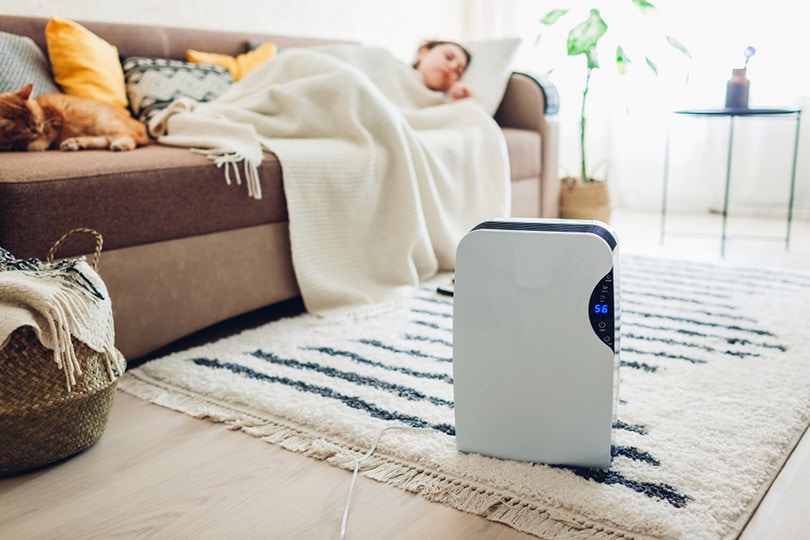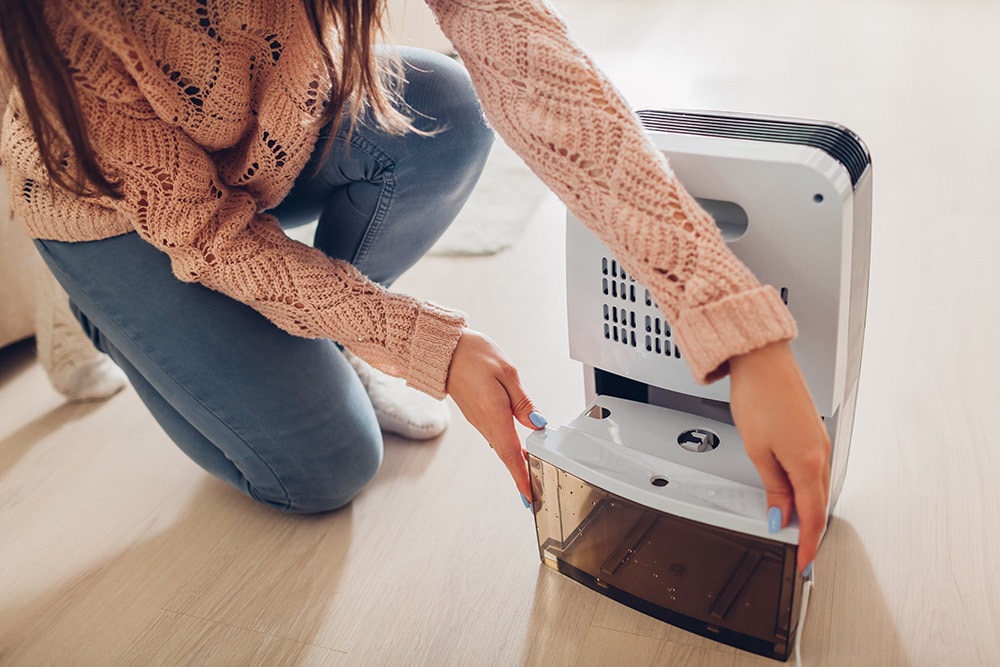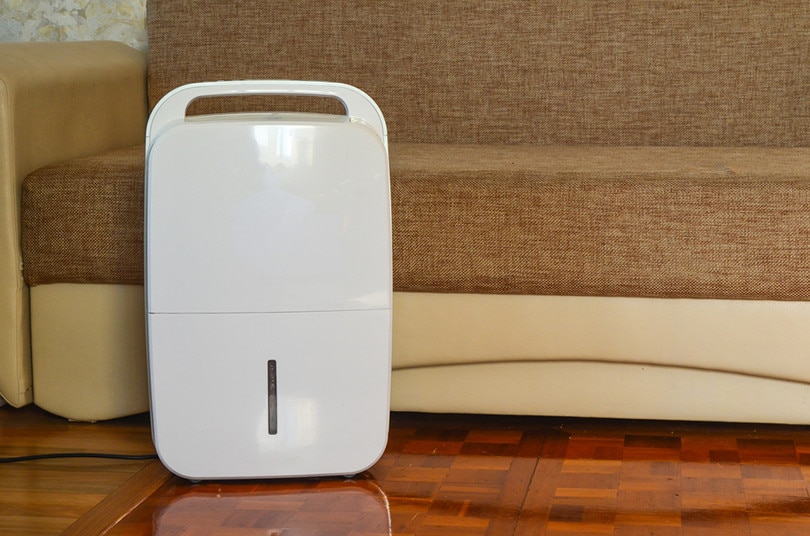What Size Dehumidifier Do You Need? Lifespan, Signs & FAQ
-
Pete Ortiz
- Last updated:

Specifically designed with one goal in mind—keeping humidity levels low—dehumidifiers are incredibly popular in the “wet” states. They come at a reasonable price and do a decent job of controlling moisture. But wait: how do you know which one to pick? What’s the perfect size for you? It depends on how big/small your room is. For example, a 500–1,500-square feet room requires a 30-pint unit.
So, before you buy any dehumidifier, make sure to check its capacity (measured in pints). As long as you know the size of your room, it shouldn’t be hard to get a proper dehumidifier for it. There’s a lot more to this, of course. Read on, and we’ll help you make the right pick!
How Do They Work?
If you live somewhere in Nevada, Arizona, or, let’s say, Utah, you’re probably a big fan of humidifiers, as they help survive the dry climate. In contrast, people from areas with extreme humidity levels want the complete opposite: a device that will take some of that moisture away and keep the house dry. That’s when dehumidifiers come in! The concept behind these “humidity killers” is relatively simple.
Essentially, they draw air in, suck all the moisture out and push the now-dry air back into the room. There are two types of dehumidifiers. First, we have absorbers/ desiccants that “trap” moisture with silica gel (known for soaking water in). Or, you can buy a refrigerant that cools the air and frees it of moisture. On top of lowering humidity levels, dehumidifiers help get rid of musty odors and prevent mildew growth.

What’s the Right Size for You?
Portability, energy efficiency, and pricing are all very important. However, the #1 factor when choosing a dehumidifier should be its capacity. If it’s too low, the unit simply won’t be able to keep the room dry. Therefore, the larger the room, the bigger the dehumidifier should be. To treat a 500–1,500-square feet damp room, you’ll need a 25–40-pint device.
For a bigger room (2,000–2,500-square feet), make sure the capacity is at least 45 pint (50, to be safe). Finally, a capacity of 60–70 pints is only intended for really large living rooms or basements with over 2,500 square feet. We’re talking about damp rooms here. If the humidity levels are way above the average, a dehumidifier’s efficiency will drop by 30% and by up to 60% if the house is extremely wet.
It’s All About the Calculations
You need to know in advance how big or small each room is before buying a dehumidifier. Otherwise, it will either be too weak or way too strong, and you’ll basically be wasting money on it. Figuring out the square footage of a room doesn’t take much effort, though. First, measure the length and then check the width. Once you’ve got both numbers written down, multiply them to get the square feet.
But what if the room has an uneven shape? Well, then you’ll have to break it down into smaller parts to get accurate measurements. A quick note: if you want to dehumidify an area that’s larger than 2,500 square feet, it would be wise to get in a whole-house dehumidifier. True, it will cost a pretty penny, but if you connect it to a central heating/air system, in the long run, it will be a beneficial investment.

Are Dehumidifiers Effective?
Yes, these devices are well worth their price. If you have a hygrometer, measure the humidity levels in a room before and after using a dehumidifier. You will have to give it at least 5–6 hours to do its job, but you’ll clearly see that moisture levels in the air are, indeed, dropping. Besides, as mentioned earlier, the less humid a house/room is, the harder it will be for mold to grow.
More importantly, if you have difficulty breathing or asthma, a dehumidifier will help with that. Lastly, low humidity levels kill most allergens, keeping every single person (and domestic animal) in the house healthier. So, yes, dehumidifiers are quite effective, and in more than one way.
What’s the Ideal Humidity for My Room?
For most humans and pets, the perfect humidity level is 30–50%. Anything lower is considered to be too dry; anything higher than 50% is overly humid. Some experts claim 30–40% is the ideal range; others say even 60% is normal. These values will differ a bit depending on the climate, of course.
People living in most South American countries are used to high humidity, while the northern US states are known for their low moisture levels. Remember: the colder it is, the drier the air will be, and vice versa. Therefore, if you live somewhere in Minnesota, North Dakota, or Maine, you’ll probably need to get a humidifier instead of a dehumidifier.

How Long Does a Dehumidifier Last?
On average, these devices serve for 5–10 years, which is quite a decent lifespan for their price (more on that soon). So, how can you make a humidifier last longer? As always, the answer is maintenance. First, don’t forget to frequently change the air filters. To maximize the lifespan of the dehumidifier, install a brand-new filter every 6–12 months.
The water bucket, coils, and grills don’t need to be replaced. Instead, keep them clean, and they will go on for many years. A quick note: most brands sell their devices with a manufacturer’s guarantee. Sometimes, it’s a 1-year deal; in other cases, they cover the unit for its lifetime. Make sure to check the warranty before making a purchase.
Common Signs of Failure
Dehumidifiers don’t last forever, and they do break down once in a while. Here’s a quick look at the most common issues:
- Takes a couple of tries to turn on. Before you take the dehumidifier to a repair shop, check the electric outlet (just plug a phone or a lamp into it). If the outlet is working fine, it’s the dehumidifier’s control board to blame. Don’t try fixing it manually—let a pro handle it.
- Hard to shut it off. This is another common issue: the device turns on easily but refuses to turn off. This could be a sign that the dehumidifier’s capacity is too low for the room. If not, most likely, it’s the humidity sensor’s fault—it’s getting the wrong readings. Sometimes, this can lead to frost building up inside of the device.
- Makes lots of loud noises. Check all the screws and brackets. If they’re loose, a screwdriver will help solve the issue and avoid costly repairs.
- Leaking water. This is often caused by a displaced collection bucket. Or, there might be a crack here and there letting water escape. Is the bucket in prime condition? Then a poorly connected drain hose is what’s causing all this trouble.
- Poor performance. Speaking of the hose, it can also affect overall performance. So, if you’re noticing that the dehumidifier isn’t collecting water like it used to, diagnose the drain hose.
How Much for a Brand-New Device?
This depends on the size of the dehumidifier. A medium-sized device that you can move from one room to another will set you back $200–450. A whole-house setup, in turn, will be available for at least $1,000, with the average price hanging in the $1,000–2,000 range. That’s how much it’s going to cost to have a dehumidifier installed in a small or average-sized house. If you own a much bigger residence, the price will be 20–45% higher.
Along with the size and the capacity, the price will be dictated by the ductwork and the furnace/HVAC system that’s already in place. The area that you live in will also affect the final cost. So, before making an order, get estimates and quotes from at least a couple of local contractors.
Final Thoughts
If you live in one of the southern states, you know what it feels like to get your clothes wet after five minutes of work. And this is the least of the problems! Fatigue, weariness, and the risk of your body overheating are some of the worst side effects of abnormal moisture levels. Thankfully, there’s a remedy for that—a portable or whole-house dehumidifier.
Follow our instructions closely, get a device that can “handle” the size of your room, get it connected, and enjoy a dry climate! Dehumidifiers have a great lifespan, come at a reasonable price, and take little effort in maintenance. More importantly, they get the job done. Just turn it on, and the device will do the rest!
See Also:
- 12 Uses for Apple Cider Vinegar Around the House (with Pictures)
- What Is APR on a Car? Car Loan Terms Explained
- MassSave – When to Pull the Plug on Your Dehumidifier
- The Definitive Answer of How Long Should a Dehumidifier Last?
- NEED A DEHUMIDIFIER? HERE’S HOW TO KNOW THE SIZE YOU NEED
- It’s Not Just the Heat, It Really Is the Humidity
- How much does a dehumidifier cost to install?
- How to Choose the Size of a Dehumidifier
- Humidifiers: Ease skin, breathing symptoms
- Healthline – What Does a Dehumidifier Do?
- Net – Wettest and Driest U.S. States
- HowStuffWorks – How Dehumidifiers Work
- ExplainThatStuff – Dehumidifiers
- Signs Of A Broken Dehumidifier
Featured Image Credit: Mariia Boiko, Shutterstock
Contents


